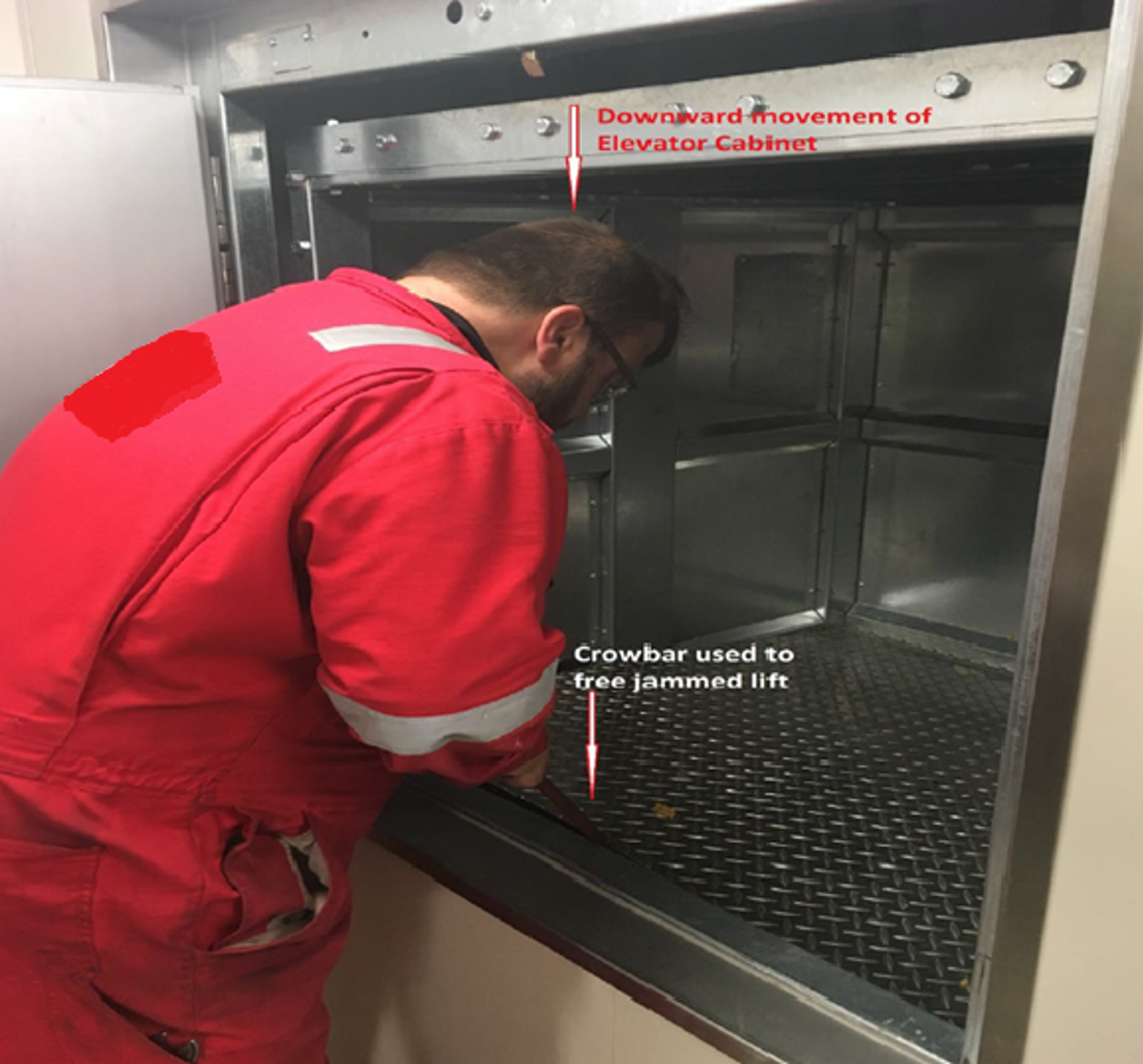LTI: Head injury
- Safety Flash
- Published on 5 April 2019
- Generated on 28 April 2025
- IMCA SF 06/19
- 3 minute read
Jump to:
A provisions lift onboard a vessel became stuck.
What happened?
The chief engineer was called to attempt a repair. During assessment of the problem, the lift dropped whilst his head was in its path, causing a serious head injury resulting in an LTI. He made a full recovery.
What went wrong?
The vessel provisions lift was loaded with items to be stored onboard when one of the crew identified that the lift had become stuck. This was due to packaging from some of the food items fouling the lift shaft.
The chief engineer asked for the pry bar to see if he could clear it. He then struck the jammed object (food packaging) with the pry bar and at this point the elevator dropped suddenly to the main deck.
The crew member was struck in the back of his head by the front horizontal cabinet bar after it had dropped from the jammed position.
It is estimated that the elevator cabinet fell about 15-20 cm before it made contact with his head.

The provisions elevator dropped in an uncontrolled manner;
- The elevator lifting chains were in a slack position and not supporting the weight of the elevator cabinet due to the packaging being stuck. When the food packaging jam was removed, it allowed the provision elevator to drop in an uncontrolled manner.
- The Chief Engineer's body position was in the line of fire. When using the crow bar, he lent forward, and his head was then inside the elevator cabinet.
What were the causes?
Our Member’s findings were:
- Manufacturer’s quality control – deficiencies in the quality control and document control process.
- Oversight during commissioning – inadequate oversight during commissioning.
- There was inadequate risk perception: formal work planning tools were not in place (permit to work (PTW), risk assessment).
What actions were taken?
- Provisions elevator removed from service until issues identified have been addressed and repaired by manufacturer.
- New risk assessment developed to cover any work required on the elevator.
- Vessel training sessions developed and will be conducted with onboard management. Onboard management will then present these topics (i.e. risk management process, life-saving rules, to their teams at safety meetings).
What lessons were learned?
- The incident may have been avoided had the formal work planning tools (i.e. PTW, risk assessment, tool box talk (TBT)) been in use when the problem with the jammed provision elevator occurred.
- It was also identified after further investigation that the manufacturer’s approved electrical drawings had a design flaw allowing some safety interlocks to be electrically bypassed.
Related Safety Flashes
-
IMCA SF 03/16
27 January 2016
-
IMCA SF 13/01
1 November 2001
IMCA Safety Flashes summarise key safety matters and incidents, allowing lessons to be more easily learnt for the benefit of the entire offshore industry.
The effectiveness of the IMCA Safety Flash system depends on the industry sharing information and so avoiding repeat incidents. Incidents are classified according to IOGP's Life Saving Rules.
All information is anonymised or sanitised, as appropriate, and warnings for graphic content included where possible.
IMCA makes every effort to ensure both the accuracy and reliability of the information shared, but is not be liable for any guidance and/or recommendation and/or statement herein contained.
The information contained in this document does not fulfil or replace any individual's or Member's legal, regulatory or other duties or obligations in respect of their operations. Individuals and Members remain solely responsible for the safe, lawful and proper conduct of their operations.
Share your safety incidents with IMCA online. Sign-up to receive Safety Flashes straight to your email.